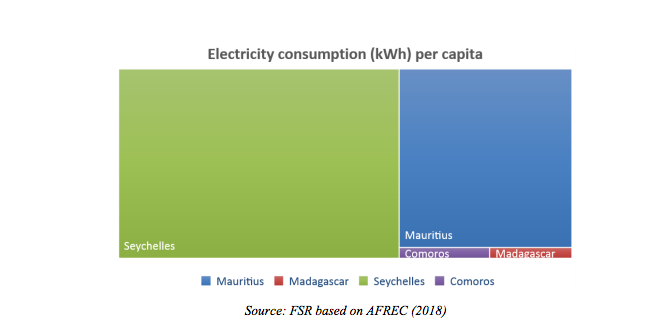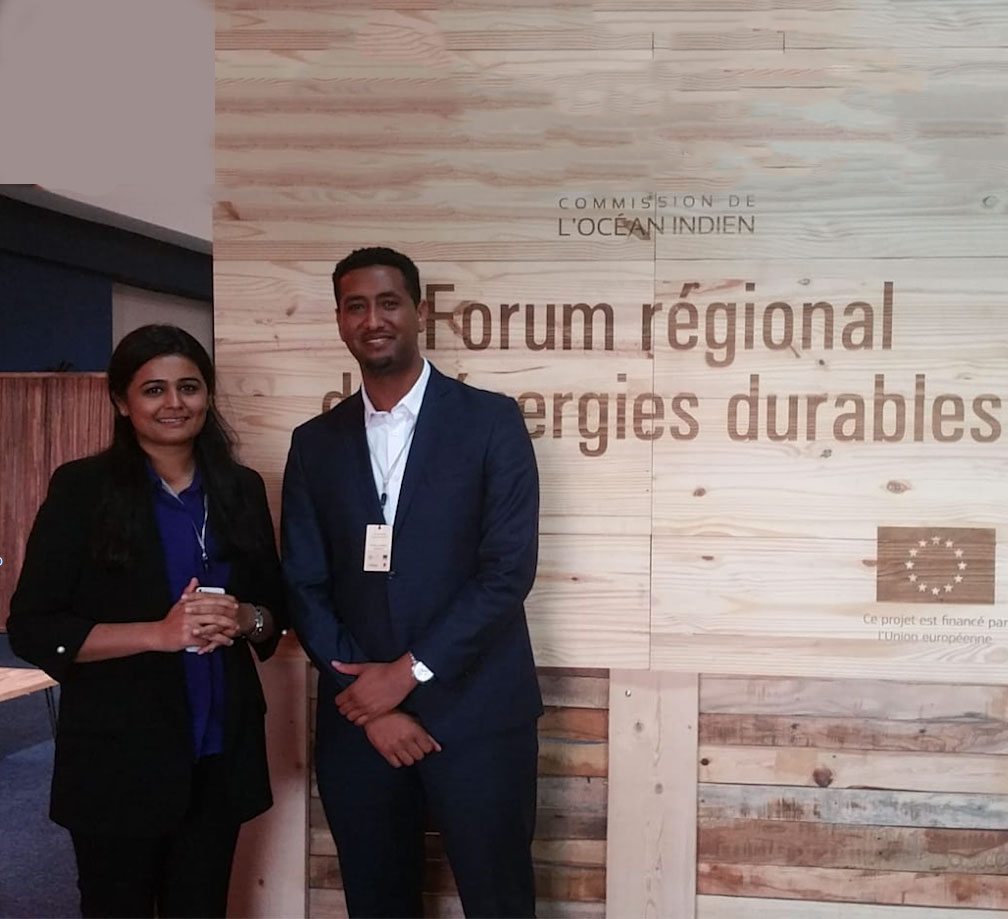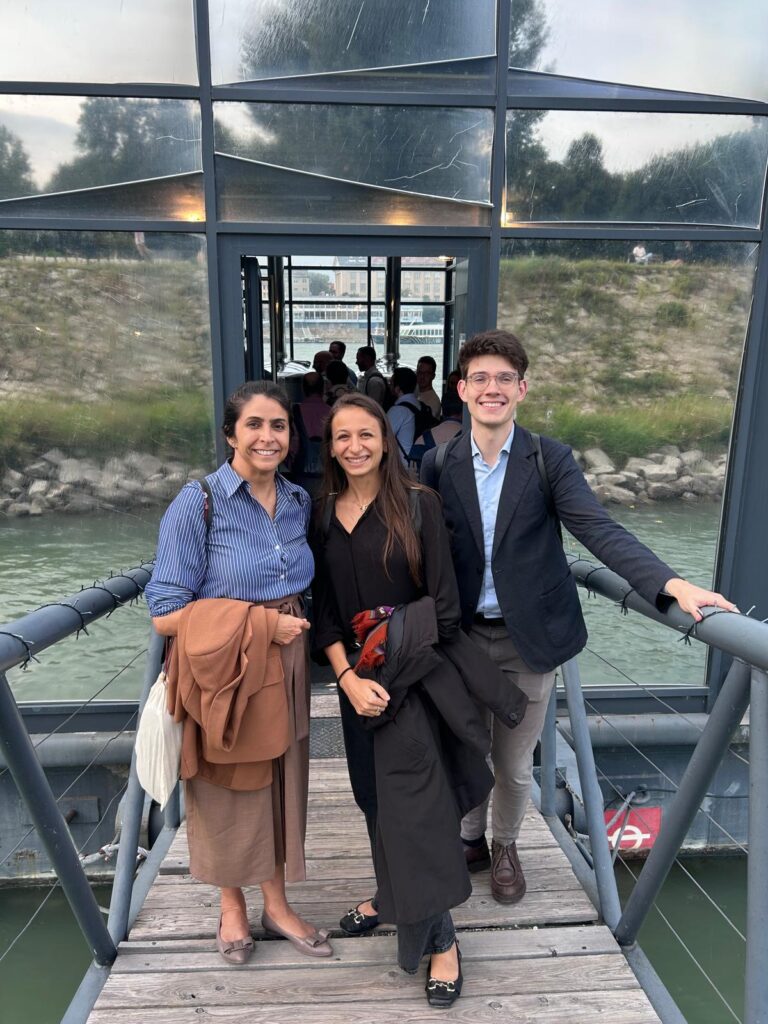Week 2 – FSR Topic of the Month:
Energising Islands in the age of transition
This month, FSR is featuring the energy transition in the Indian Ocean Islands of Mauritius, Seychelles, Madagascar and Comoros, presenting findings based on our engagements with the island nations. In our previous post, we highlighted the particularities of energy transition in the context of these Islands. In this week’s post, we will look into their electrification challenges, focusing on two Islands to which this applies – Madagascar and Comoros.
Written by: Swetha RaviKumar Bhagwat & Samson Yemane Hadush
Islands with limited access to electricity face a dual energy challenge. On the one hand, they have set renewable energy targets to help them transition to a cleaner energy system. On the other hand, a large number of their population still lacks electricity access. Although these islands have targets to increase both the electrification rate and the share of renewables in their energy mix, achieving one target does not necessarily lead to the achievement of the other. Will the islands manage to hit two birds with one stone?
In what follows, we present five dimensions that can be considered by the islands to get the electrification formula right.
Get the definition of electricity access right
Electrification is not only about providing connection but also about ensuring firm and reliable access. That is, the consumer should have the right to use electricity at any time, for any use at an affordable price. Take the case of Comoros. According to the world bank energy database, the country has achieved electrification rate of 80% while, in reality, roughly around 65% of the population is actually connected to the grid. Furthermore, as shown in the figure below, the electricity consumption per capita remains very low. This is mainly due to the low reliability of electricity supply (often concentrated in and around the capital region), hindering the productive use of electricity. Similarly, Madagascar faces these challenges with the added burden of electrifying 85% of its population.
If islands limit the definition of electricity access, they automatically restrict the scope of what they would like to achieve regarding their electrification mandates, thereby limiting solutions that could be adopted, especially if one is transitioning to a cleaner energy system.

Adequately assess the demand
Proper assessment of demand is key for electrification planning and its execution. Currently, both Madagascar and Comoros lack coherent data on the usage level and pattern of the population that is not serviced by the utility, and the extent to which serviced customers rely on backup generation. This can distort the optimal mix of different modes of electrification and lead to inefficient planning and investments, especially if proper forecasting is not undertaken. Many electrification solutions risk being obsolete if they are designed to satisfy the current needs of the society without anticipating the evolution and economic development of the target community. Therefore, islands must adopt suitable assessment tools and develop expertise to collect, manage and maintain energy data to get a clear indication of the capacity requirement and to plan for it.
Synergise policies and embed electrification in the development plan
Achieving renewable energy targets does not guarantee the realisation of universal electricity access. The priority can imply how scarce funding of the government and development partners is allocated. If increasing the share of renewables is prioritised, islands may channel investments and incentives only to the grid-connected system, while fewer resources are directed towards increasing grid connection. Therefore, setting the right policy blend is vital to avoid risks of leaving part of the population unelectrified.
Furthermore, electricity alone cannot kick-start local growth, although it is definitely a stepping stone towards improving the living standard of societies. Hence, it is crucial to embed electrification in the national and local development plans that include other necessary infrastructures such as water, transport, health and education. This can help improve the low connection rates and weak productive utilisation of electricity that are currently evident on these islands, as well as boost the local economy.
Set the right legal and institutional framework
Energy policy documents should not only present targets but also provide a plan on how they can be achieved. To do so, the islands must first clearly define roles of all relevant institutions including ministries, regulators, utilities and other energy agencies. Currently, the power system in Madagascar and Comoros is characterised by ineffective regulatory frameworks and
underperforming state-owned vertically integrated utilities that are facing revenue deficits. This coupled with political instability, and lack of strong political commitment, threatens the realisation of both the renewable energy and electrification targets. In this regard, Madagascar has recently introduced a new energy policy and a legal framework that provides the regulator with a more active role in providing oversight on the activities of the Malagasy energy sector by coordinating all stakeholders.
Listen to our interview
with Ketakandriana Rabemananjara, Director (Legal) of Office de Régulation de l’Electricité, Madagascar
Moreover, since electrification on the islands will involve both grid extension and off-grid systems, it is essential to revisit the role and responsibility of rural electrification agencies like the Agency for Rural Electrification (ADER) in Madagascar. This includes coordinating their off-grid planning and investment strategies with that of the utility which is generally responsible for grid extensions.
Provide effective market and regulatory incentives
Given the high upfront cost of investments in energy infrastructure, a cost-sharing arrangement is often necessary. Under such arrangements, the government and development partners usually finance a portion of these costs. However, these subsidies are not always targeted towards those who need them most; i.e., low-income customers who cannot afford to pay for the connection. The fact that tariffs are set politically also adds to the challenge of electrification. Politically set low electricity tariffs adversely affect the performance of the utility. As a result, the utility may not have the commercial incentive to expand its grid and connect more customers. For example, in Comoros where there is a good network infrastructure coverage (around 80%) and good population density, the utility as well as private participants can speed up the connections with the right incentives. Particularly, in grid enhancement at the distribution end.
Therefore, it is recommended to have an efficient subsidy design and allocation; reasonable tariff levels preferably set by an independent regulatory body; and service obligation contracts for utilities to connect new customers. Doing so can also provide market incentives for private investors who can play an important role in ensuring rapid and effective implementation of the renewable and electrification mandates.
In a nutshell, if the islands get the electrification formula right, they will be able to attract the right participants and the right investments to flow and thereby get their economic development engines running.
Coming up next week: Who is in the Renewable Energy driver’s seat?
Stay tuned!






